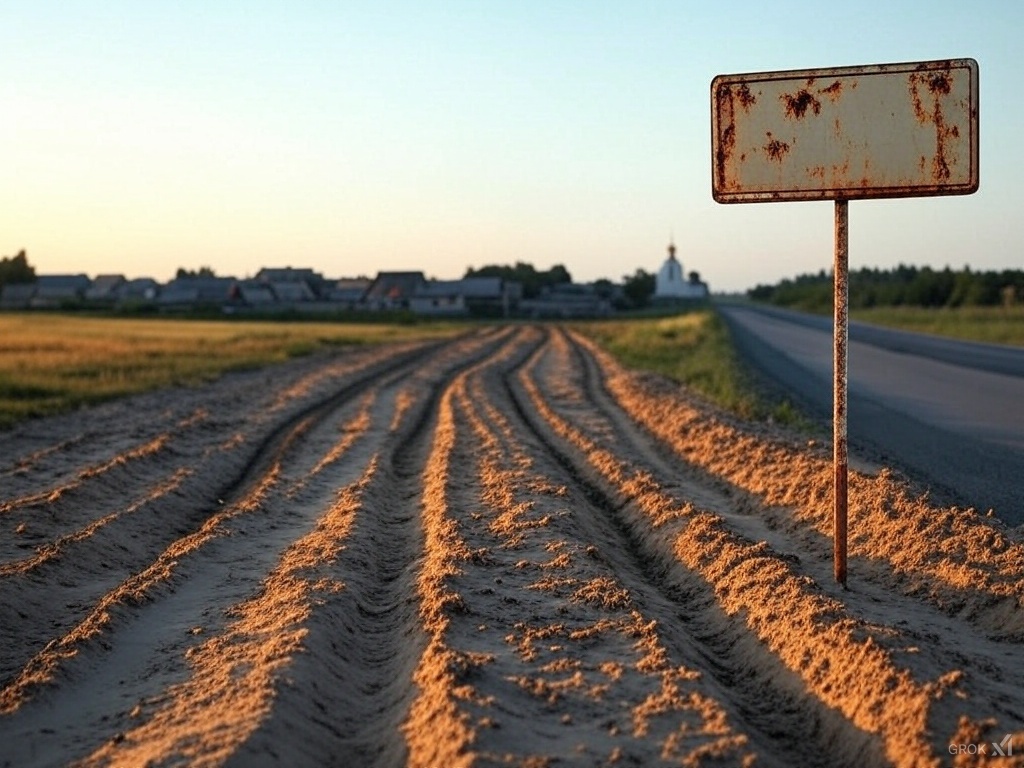Ukraine Anniversary Heralds a Fork in the Road

26 February 2025
Three years after Russia’s tanks rolled into Ukraine on February 24, 2022, the war grinds on, its third anniversary marked by European leaders in Kyiv pledging billions more in aid while America’s new administration hints at a ceasefire that could redraw maps. The EU and US grapple with their defense partnership, strained by diverging visions for Ukraine’s future.
A rusted signpost stands crooked in the wind-swept fields near Bakhmut, its arrows pointing to Kyiv, Moscow, and a third, illegible destination scratched out by time. Three years of war have etched exhaustion into Ukraine’s landscape and its people, yet defiance lingers too. European leaders descended on Kyiv this week, their speeches thick with solidarity—Ursula von der Leyen promising €135 billion in total support, Spain adding €1 billion in weapons for 2025. Across the ocean, Donald Trump’s White House offers a different tune, one of minerals deals and peace talks that might cede Crimea to Russia. The anniversary reveals a transatlantic rift, a quiet fracture in how to end a conflict that has killed tens of thousands and displaced millions.
Ukraine’s fate now teeters on a knife-edge, with two paths emerging. One leads westward, toward NATO and the EU, a journey fueled by Europe’s growing assertiveness. Von der Leyen’s meeting with US envoy Keith Kellogg in Brussels underscored this ambition—€52 billion in EU military aid matches America’s contribution, a signal that Europe seeks to shoulder more. Plans for peacekeepers and a beefed-up defense industry hum in the background, with Macron floating French boots on Ukrainian soil. The EU’s €40 billion military aid proposal for 2025, debated in Brussels, reflects a continent wary of relying solely on a wavering Washington.
Yet the other path veers toward compromise, a Trump-brokered deal that could halt the guns within weeks. The US president, hosting Emmanuel Macron on February 24, 2025, boasted of ending the war swiftly, warning of a third world war if it drags on. His administration’s reluctance to name Russia the aggressor at the UN—voting alongside Moscow against a European resolution—hints at concessions Kyiv dreads. A minerals agreement looms, potentially trading Ukraine’s resources for peace, though Zelensky insists on security guarantees that remain elusive. This route promises relief from the daily grind of artillery and drones, though at a cost that might leave Ukraine truncated and exposed.
Economic pressures add weight to both trajectories. Russia’s war machine, pumping out 1,550 tanks in 2024, thrives on oil and gas exports—40% of its budget—despite Western sanctions. Europe’s €48.7 billion in arms to Ukraine has strained its own economies, with inflation ticking upward as energy costs bite. A bolder move, some whisper, lies in economic warfare beyond sanctions—coordinated trade barriers targeting Russia’s metals and fertilizers alongside its fossil fuels. Such a strategy might sap Moscow’s coffers, forcing Putin to negotiate. Historical parallels linger: Reagan’s trade squeeze hastened the Soviet Union’s end. Today’s Russia, though, leans on China, which snaps up discounted oil, dulling the West’s edge.
Doubts shadow this economic gambit. Raising trade barriers risks blowback—Europe’s grids still draw Russian gas, and American households could balk at costlier goods. Putin’s resilience, honed over decades, suggests he might outlast Western patience. In Kyiv, leaders like Zelensky reject half-measures, demanding NATO membership over vague promises. A peace that surrenders territory, they argue, merely postpones the next fight. Europe’s talk of peacekeepers sounds noble, yet its defense industry lags, producing a fraction of America’s output. Coordination across the Atlantic remains the linchpin—Trump’s absence from Kyiv’s summit underscores the challenge.
The anniversary also exposes a deeper shift. America’s B-52s roared over Estonia on February 24, a show of strength, yet its UN votes signal retreat. Trump’s pivot toward Moscow—echoed in his claim Putin welcomes European peacekeepers—leaves Europe to ponder its own heft. The UK’s Keir Starmer, boosting defense spending to 2.5% of GDP by 2027, plans a European summit to rally support. Still, the EU’s €135 billion pledge dwarfs its firepower compared to America’s $65.9 billion in arms. A fork looms: Europe stepping up as America steps back, or a fragile unity fraying under pressure.
Time presses. Russia’s 700,000 troops dig in, fortifying Crimea and the Donbas, while Ukraine’s lines thin. A prolonged war threatens Moldova, Georgia, even NATO’s eastern flank. The West’s next move—whether economic, military, or diplomatic—demands precision. History shows half-hearted efforts fail; the Cold War’s end required resolve. In Kyiv, a makeshift memorial of flags flutters in Independence Square, each bearing a fallen soldier’s name. In Brussels, diplomats sip coffee and weigh billions. The signpost near Bakhmut creaks, its third arrow still unreadable—westward promise or eastward truce, the choice nears, and with it, Ukraine’s tomorrow.
